Copper-nickel (also known as cupronickel) alloys are widely used for marine applications due to their excellent resistance to seawater corrosion, low macrofouling rates, and good fabricability. They have provided reliable service for decades while offering effective solutions to today’s technological challenges.
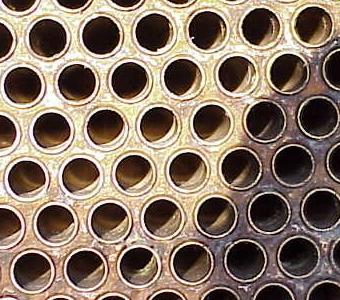 Heat exchanger
Heat exchanger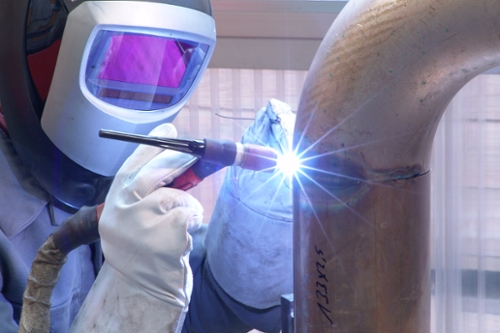 TIG welding
TIG welding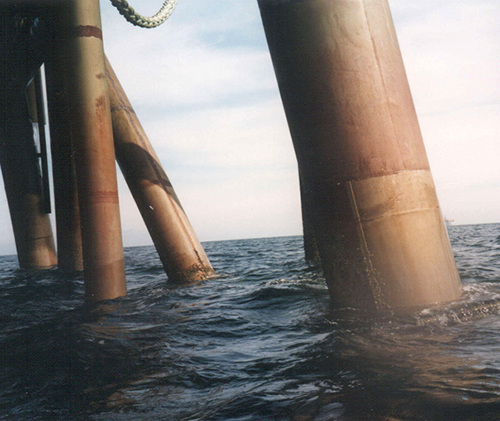 Splash zone sheathing
Splash zone sheathingThe addition of nickel to copper improves strength and corrosion resistance while allowing the alloy to remain ductile. Other elements can be added to copper-nickel to increase strength, corrosion resistance, hardening, weldability and castability.
90-10 copper-nickel (C70600, CW352H), an alloy with 90% copper and 10% nickel, is the most commonly used alloy. It can be found in naval and commercial shipping, offshore oil and gas production as well as desalination and power generation. Alloys with 30% nickel content (C71500, C71640) and those which are more highly alloyed with aluminum, chromium or tin are used where greater resistance to seawater flow, sand abrasion, wear and galling, as well as higher mechanical properties, are required.
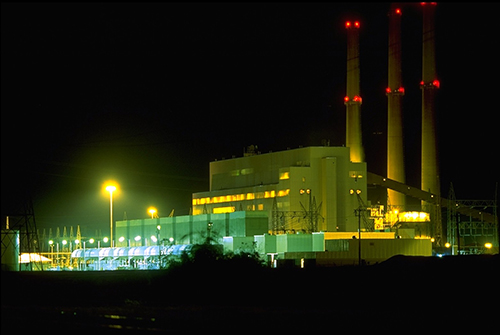 Power stations
Power stations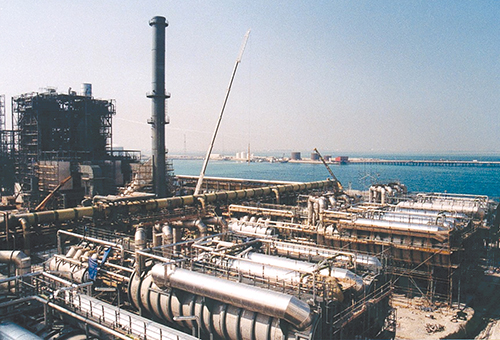 MSF desalination
MSF desalinationNon-marine applications for copper-nickel include cryogenic applications, brake tubing and silver-colored coins, such as the 1- and 2-euro denominations and the 5-cent U.S. nickel. Since copper-nickel alloys have strong antimicrobial properties, they are marketed as hygienic "touch materials" to reduce cross-contamination and infections, particularly in hospital intensive care units.
Contents
This section offers a broad technical overview of copper-nickel alloys and a wealth of information/data useful for good practices in design, fabrication and application. It is organized as follows:
- Applications by Industry:
- Marine: Guidelines for Seawater System Design and Operation are presented; Seawater System Components are detailed; Sections cover Cu-Ni in Desalination Plants, Offshore Oil and Gas, Power Generation, Shipbuilding and Ship Repair, Boat Hulls, and Marine Antimicrobial applications.
- Non-Marine: Coinage; Brake Tubing.
- Types of Alloys: Marine Alloys; Alloy Compositions; Alloy Additives and Impurities; Standards; Non-Marine Alloys; Cross-Reference Table.
- Product Forms: Tables of Typical Forms and Sizes; ASTM, EN and ISO Standards; Castings; Link to Product Supplier's Search List.
- Standards: Product Forms; Compositions; Design.
- Properties: Corrosion Resistance; Macrofouling Reduction; Mechanical; Physical; Cryogenic; Antimicrobial; Environmental Properties.
- Fabrication: Joining; Welding; Brazing; Soldering; Machining Parameters; Pipework Fabrication Methods; Weld Instruction Videos.
- Resources: Product Suppliers Search list; Copper Technical Reference Library; Links to Copper-Nickel Task Group Steering Committee; Ask Us! (a free service for answering technical questions).
- Library: Many technical papers are downloadable in this section. Also, most pages in this section contain Useful Links & References.
- What's New: Upcoming events and recent additions.
Inquiries
Need additional information? Have a specific question? Ask Us!
Back to TopReferences
- Copper-Nickel Alloys for Seawater Corrosion Resistance and Antifouling - A State of the Art Review, C.A. Powell and H.T. Michels, , Corrosion 2000, NACE International.
- Copper-Nickel Alloys: Properties, Processing, Application, Booklet, German Copper Institute (DKI), English translation.
-
Copper-Nickels for Marine Environments Webcast,
 This presentation covers historic uses, applications, equilibria diagrams, chemical compositions, mechanical and physical properties, fabrication, corrosion and biofouling resistance and guidelines for successful application of copper-nickels in seawater systems. It is approved for Continuing Professional Development by the UK’s Institute of Materials, Minerals and Mining.
This presentation covers historic uses, applications, equilibria diagrams, chemical compositions, mechanical and physical properties, fabrication, corrosion and biofouling resistance and guidelines for successful application of copper-nickels in seawater systems. It is approved for Continuing Professional Development by the UK’s Institute of Materials, Minerals and Mining. -
How-To Welding Videos,
A series of 5 instructional welding videos encompasses cleaning and preparation for welding, TIG welding, pipe welding, shielded metal arc welding (SMAW) and pulsed MIG welding
.
